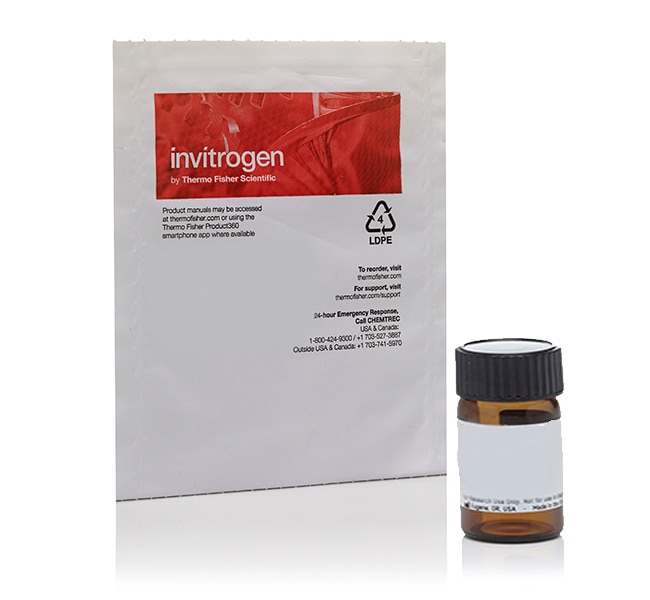Search Thermo Fisher Scientific

Invitrogen™
H2DCFDA (H2-DCF, DCF)
The cell-permeant 2',7'-dichlorodihydrofluorescein diacetate (H2DCFDA) (also known as dichlorofluores cin diacetate) is a chemically reduced form of fluorescein used asRead more
| Catalog Number | Quantity |
|---|---|
| D399 | 100 mg |
Catalog number D399
Price (USD)
212.65
Online Exclusive
222.00Save 9.35 (4%)
Each
In stock
Quantity:
100 mg
Price (USD)
212.65
Online Exclusive
222.00Save 9.35 (4%)
Each
The cell-permeant 2',7'-dichlorodihydrofluorescein diacetate (H2DCFDA) (also known as dichlorofluores cin diacetate) is a chemically reduced form of fluorescein used as an indicator for reactive oxygen species (ROS) in cells, for example to detect the generation of reactive oxygen intermediates in neutrophils and macrophages. Upon cleavage of the acetate groups by intracellular esterases and oxidation, the nonfluorescent H2DCFDA is converted to the highly fluorescent 2',7'-dichlorofluorescein (DCF). Versions of this indicator that have better cellular retention are available (C400, C2938).
ROS Indicator Specifications:
• Ex/Em: ∼492–495/517–527 nm
• Product is air sensitive and should be stored under dry argon or nitrogen
• Product may be dissolved in DMSO, DMF, or ethanol for use
• Indicator is cell permeant (cell loading protocols are available in the literature)
• Fluorescence can be monitored using a flow cytometer, fluorometer, microplate reader, or fluorescence microscope, using excitation sources and filters appropriate for fluorescein
Find More ROS Indicators
We offer an assortment of Molecular Probes™ products for the generation of reactive oxygen species (ROS), including singlet oxygen, superoxide, hydroxyl radical and various peroxide and hydroperoxides, as well as for their fluorometric detection in solution. Review Generating and Detecting Reactive Oxygen Species—Section 18.2 in the Molecular Probes™ Handbook for more information on these products.
ROS Indicator Specifications:
• Ex/Em: ∼492–495/517–527 nm
• Product is air sensitive and should be stored under dry argon or nitrogen
• Product may be dissolved in DMSO, DMF, or ethanol for use
• Indicator is cell permeant (cell loading protocols are available in the literature)
• Fluorescence can be monitored using a flow cytometer, fluorometer, microplate reader, or fluorescence microscope, using excitation sources and filters appropriate for fluorescein
Find More ROS Indicators
We offer an assortment of Molecular Probes™ products for the generation of reactive oxygen species (ROS), including singlet oxygen, superoxide, hydroxyl radical and various peroxide and hydroperoxides, as well as for their fluorometric detection in solution. Review Generating and Detecting Reactive Oxygen Species—Section 18.2 in the Molecular Probes™ Handbook for more information on these products.
For Research Use Only. Not for use in diagnostic procedures.
Specifications
Quantity100 mg
Unit SizeEach
Researching ferroptosis?
Learn about iron-dependent cell death & ferroptosis reagents to meet your research needs ›

